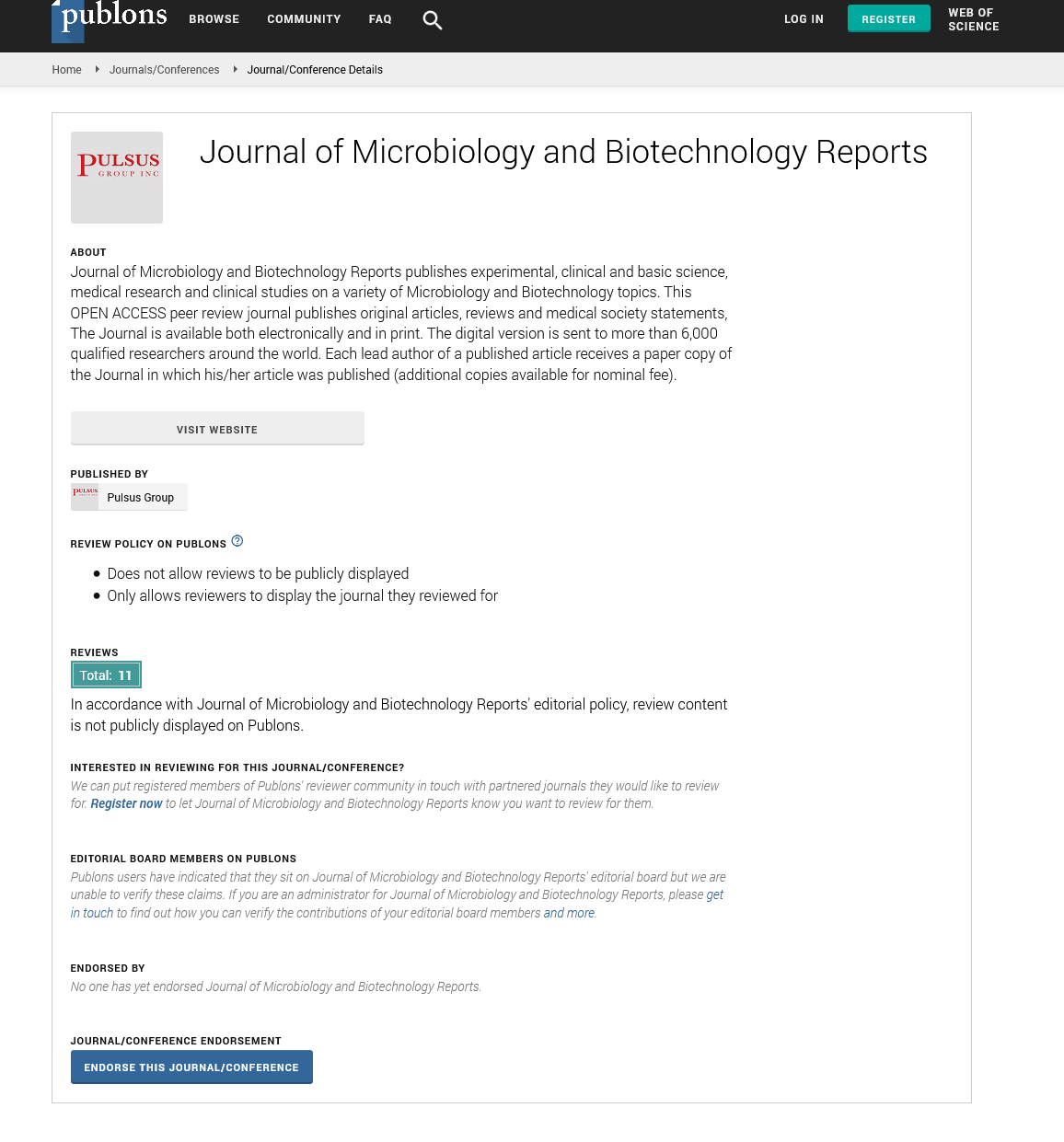Bacterial infections following pediatric liver transplants
Received: 05-Nov-2022, Manuscript No. PULJMBR-22- 5875; Editor assigned: 07-Nov-2022, Pre QC No. PULJMBR-22- 5875 (PQ); Accepted Date: Nov 23, 2022; Reviewed: 19-Nov-2022 QC No. PULJMBR-22- 5875 (Q); Revised: 22-Nov-2022, Manuscript No. PULJMBR-22- 5875 (R); Published: 25-Nov-2022, DOI: 10.37532/puljmbr.2022.5(6).69
Citation: Pandey V. Bacterial infections following pediatric liver transplants. J Mic Bio Rep. 2022;5(6):69.
This open-access article is distributed under the terms of the Creative Commons Attribution Non-Commercial License (CC BY-NC) (http://creativecommons.org/licenses/by-nc/4.0/), which permits reuse, distribution and reproduction of the article, provided that the original work is properly cited and the reuse is restricted to noncommercial purposes. For commercial reuse, contact reprints@pulsus.com
Abstract
The only curative treatment for both acute and chronic end-stage liver disease in children is Liver Transplantation (LT). However, one of the major reasons of mortality after transplantation is bacterial infection, which calls for attention and the right antibacterial care. In order to provide a comprehensive review of bacterial infections over the course of a year in the largest pediatric LT center in Iran, this study was created.
Patients with end-stage disease and organ failure now enjoy longer life expectancies thanks to advances in medical research. This includes patients who have liver failure. Liver transplantation (LT) is one of the best therapy options for prolonging the lives of patients with advanced liver disease, particularly in kids. Cholestatic conditions, metabolic issues, acute liver failure brought on by viral infections or drug use, chronic hepatitis, and cancers are the most common reasons for LT in children. Even more so than transplant rejection, infections are now one of the leading causes of morbidity and mortality following solid organ transplants. According to various research, pediatric patients experience infections following liver transplants at a rate ranging from 21 to 47%.
Key Words
Bacterial infections live
Introduction
Bacteria (up to 70% of the time) is the most common post-transplant infection organisms, followed by viruses and fungi. These individuals may have bacterial infections of various severity levels, from superficial wound infections to septic shock. Pediatric liver transplant recipients are more likely to get colonized by and infected with Multidrug-Resistant Organisms (MDRs) for a variety of reasons, such as repeated and protracted hospitalizations, immune system dysfunction, and repeated antibiotic treatment. It is prudent to use caution when extending the findings of adult studies to pediatrics because there are substantial developmental differences between pediatrics and adults that may have a significant impact on the pathophysiology and prognosis. Therefore, it is appropriate to assess the infection rates among pediatric patients receiving LT.
Our research showed that the most typical source of infections in patients following liver transplantation was intra-abdominal surgical site infection (SSI). The two most frequent sources of infection were the blood and abdomen, according to research looking at infection in young patients in hospitals during the initial stages following LT. Complex surgical procedures carried out in LT pediatrics, as well as the necessity of inserting intra-abdominal JP Drains and central vein catheters, can have a significant impact on the emergence of blood and abdominal infections.
The risk of bacterial infections in pediatric patients following LT, which increase morbidity and mortality, is significant in the initial postoperative period. In summary, a high prevalence of bacterial infection was seen among pediatric patients in hospitals in the immediate aftermath of LT. Higher fatality rates and longer hospital admissions were linked to these illnesses. In multivariate analysis, there was no additional risk factor for acquiring an infection besides lengthier ICU stays. Additionally, it could be sensible to substitute piperacillin-tazobactam for carbapenems in empirical treatment.





